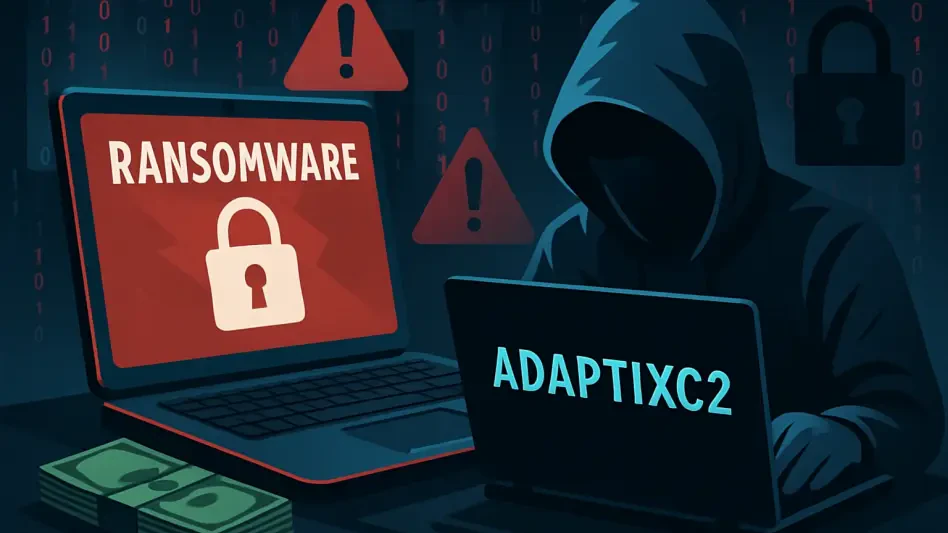Imagine opening what appears to be a routine email, only to discover that it contains hidden threats capable of breaching your organization’s security. In the realm of digital communication, this is a grim reality that businesses face with the emergence of SVG smuggling. Cybercriminals are adept at embedding malicious code within SVG image files that are disguised as innocuous visuals, presenting a new and insidious form of danger. The increasing sophistication of cyberattacks has led to significant concerns about existing cybersecurity defenses. These threats have become more complex, evolving in parallel with technological advancements. SVG smuggling is a clear example of how attackers continuously innovate to sidestep traditional defenses. This strategy has gained traction with cybercriminals leveraging weaknesses in email security measures, such as SPF, DKIM, and DMARC, to infiltrate business operations. Despite the robustness of existing protocols, B2B service providers, utilities, and SaaS firms find themselves particularly vulnerable due to their reliance on email communication.
The Growing Concerns of Cybersecurity Defenses
The escalating threat posed by SVG smuggling is part of a broader trend where cybercrime tactics evolve rapidly, outpacing traditional security systems. Attackers continuously adapt their methodologies to exploit vulnerabilities in cybersecurity frameworks. This trend highlights the need for businesses to maintain vigilance and adaptability in their defensive measures. SVG smuggling primarily targets industries handling sensitive customer data, offering essential services, or managing extensive digital communication networks. These sectors, including utilities and software-as-a-service providers, deal with high email volumes, making them susceptible to these nuanced threats.
Understanding the implications of SVG smuggling necessitates recognizing its place within the larger scheme of cyber threats and its impact on affected industries. The technique cleverly circumvents defenses designed to tackle more overt threats. It underscores a critical point: no organization is immune. Consequently, enterprises must prioritize ongoing assessments of their cybersecurity strategies, ensuring they remain robust against the unpredictable landscape of digital threats.
Understanding SVG Smuggling: Inside the Attack Methodology
SVG smuggling is a sophisticated attack technique wherein cybercriminals embed malicious JavaScript in SVG image files, capitalizing on the perception of images as safe entities. They strategically pair phishing emails with SVG images, playing on weak security protocols like SPF, DKIM, and DMARC. These emails often employ deceptive tactics, using lookalike domains to mimic legitimate sources, thus gaining the trust of recipients.
Attackers deploy advanced encoding methods, such as XOR key decryption and Base64 encoding, to conceal harmful scripts within these images. Once opened in a web browser, these scripts activate and redirect users to fraudulent websites, creating points of vulnerability within seemingly secure environments. This cunning method highlights the importance of enhancing email security measures to safeguard organizations’ networks against these stealth intrusions.
Insights from Security Experts
Security experts have been scrutinizing SVG smuggling, examining its tactics and implications. Researchers, such as those at Ontinue Advanced Threat Operations, have shed light on the challenges organizations face in combating these novel threats without dedicated cybersecurity personnel. John Bambenek, a consultant specializing in this field, emphasizes the necessity for enterprises to understand the risks posed by these innovative techniques. He notes that companies lacking robust security teams remain particularly vulnerable to such methodologies.
These insights are backed by real-world anecdotes wherein SVG smuggling has effectively bypassed traditional defenses. These case studies underscore the effectiveness of SVG-based attacks, demonstrating the urgent need for businesses to bolster their cybersecurity protocols. Understanding expert perspectives on these threats can aid organizations in crafting comprehensive strategies to protect against evolving cyber challenges.
Protecting Your Organization from SVG-Based Threats
To combat SVG smuggling and similar threats, businesses should implement specific security measures. Utilizing Microsoft Defender features like Safe Links and Safe Attachments can play a crucial role in preventing such attacks. Enhancing email security by aligning SPF, DKIM, and DMARC protocols can further solidify defenses against phishing schemes and domain impersonations.
Organizations should also consider blocking SVG attachments outright and educating employees on the risks associated with these files. Awareness campaigns can drive home the importance of scrutinizing digital communications, challenging the assumption that images are naturally safe. By remaining vigilant and ensuring comprehensive protection protocols, entities can significantly reduce their vulnerability to SVG smuggling and remain resilient in the face of sophisticated cyber threats.
Reflecting on SVG smuggling’s impact, businesses have learned the critical importance of continuously refining security practices to address emerging threats. Bolstering defenses against such stealthy attacks requires an ongoing commitment to adapt and evolve with the cybersecurity landscape. Proactive measures and heightened awareness form the cornerstone of safeguarding invaluable digital assets and maintaining secure communication channels in today’s interconnected world.








